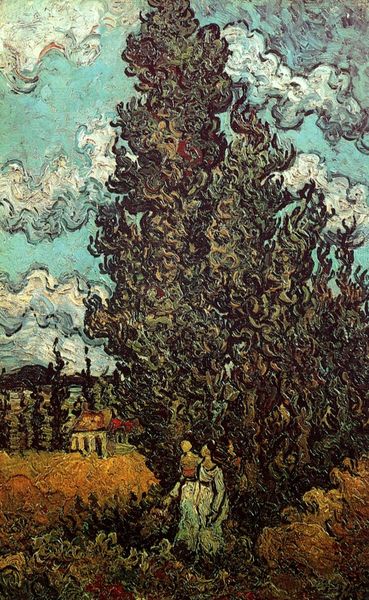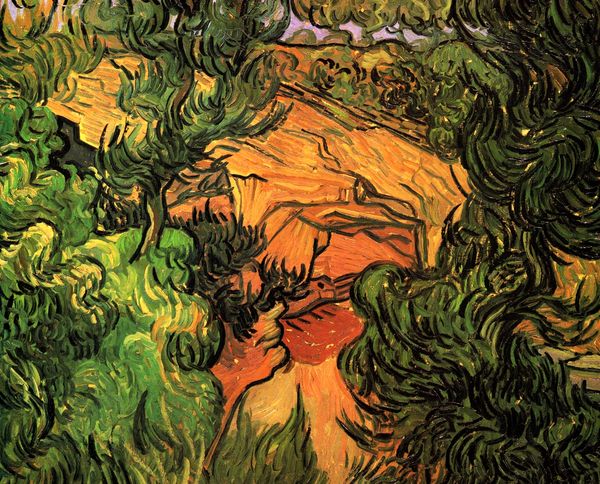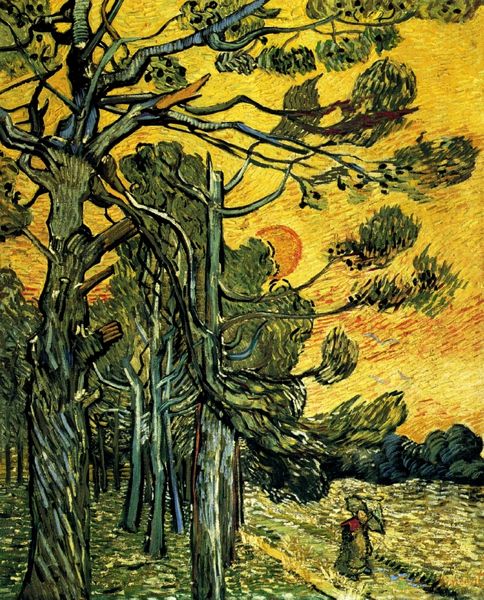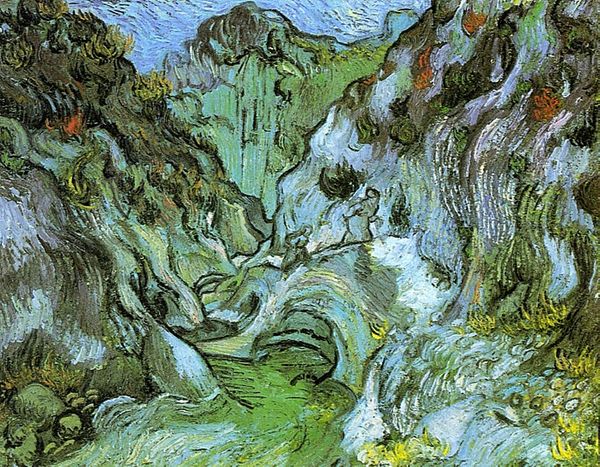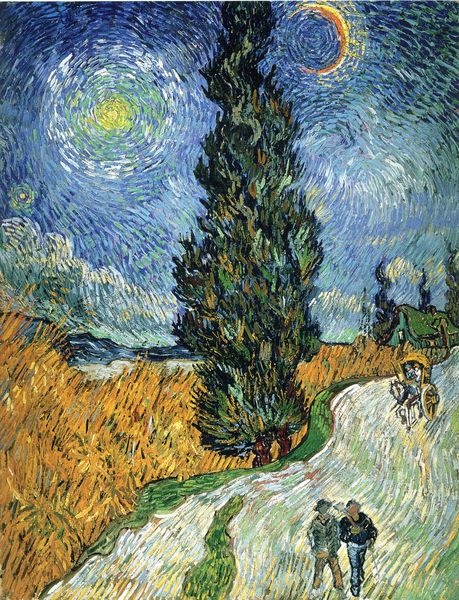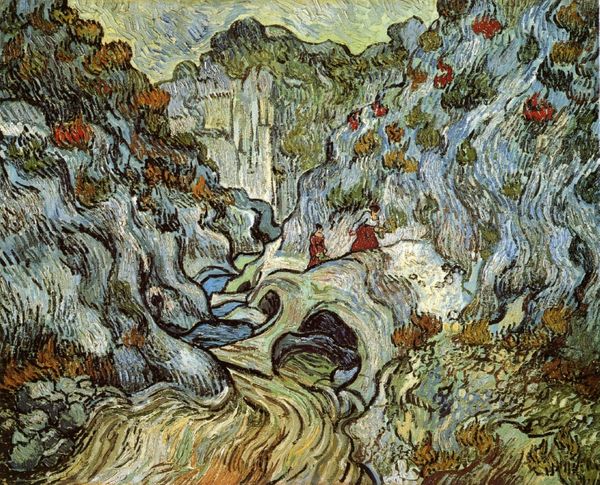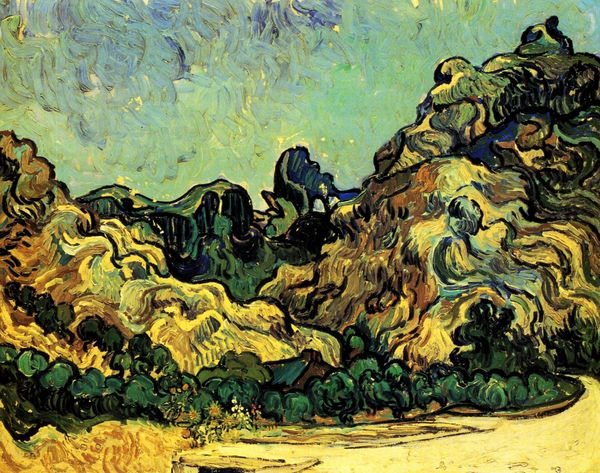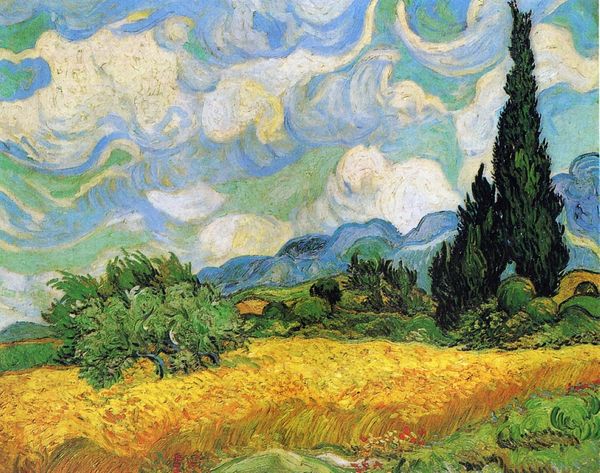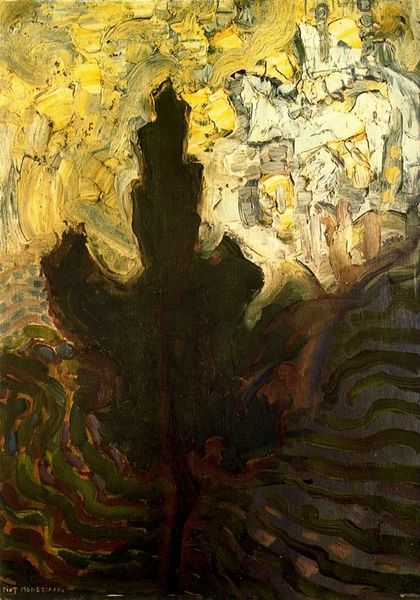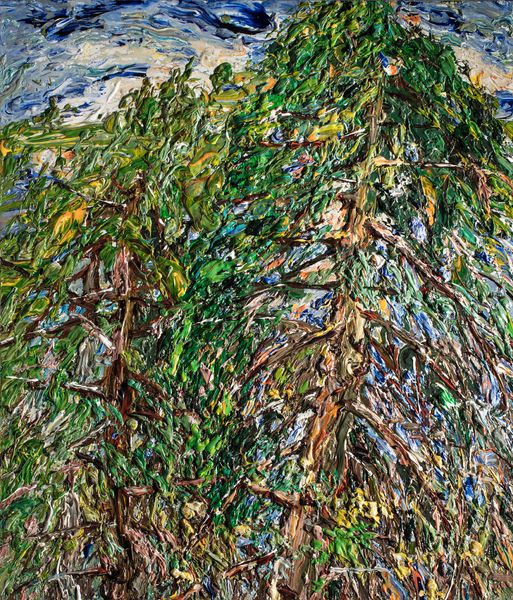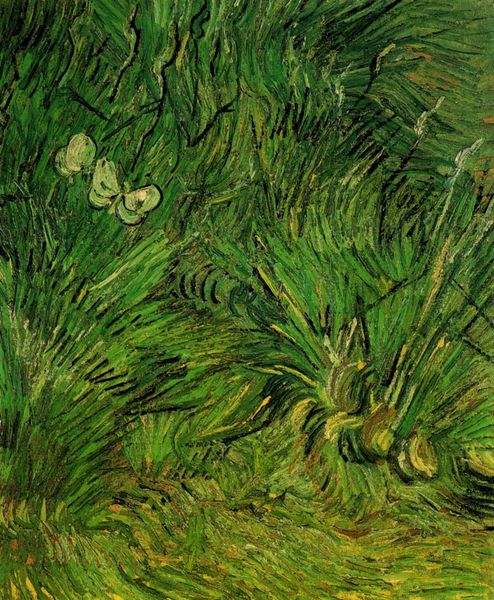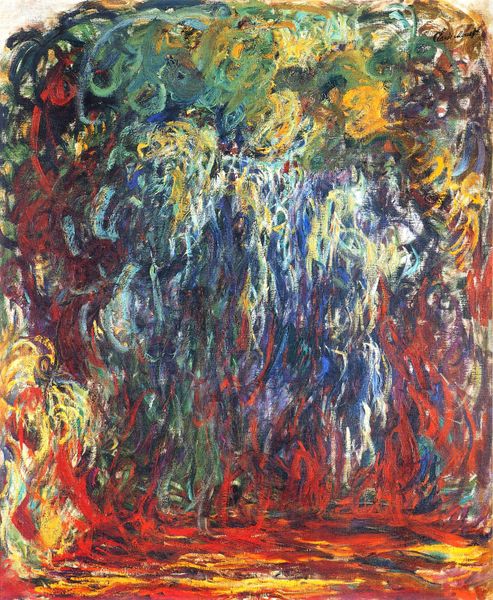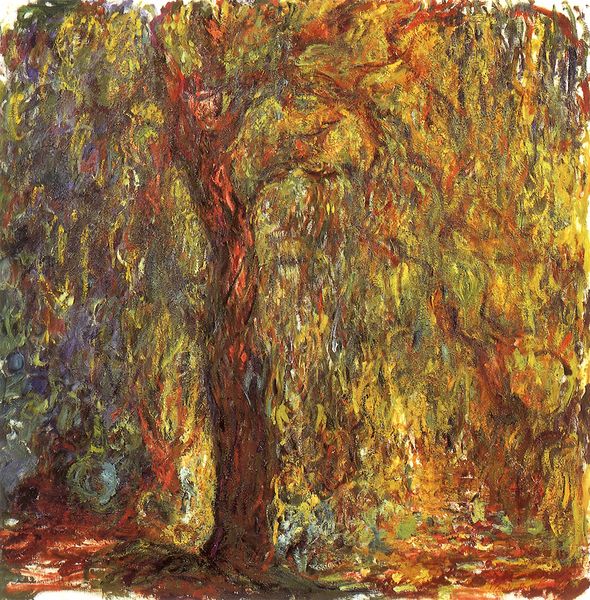
Dimensions: 74 x 93.3 cm
Copyright: Public domain
Editor: We’re looking at Vincent van Gogh’s “Two Cypresses,” painted in 1889 using oil paints with thick impasto. The trees dominate the canvas. It has a strange feeling, almost like the landscape is alive and swirling around them. What do you make of this, from your perspective? Curator: Van Gogh was deeply invested in imbuing the natural world with spiritual meaning, wasn't he? The cypress, reaching towards the heavens, acts as a visual symbol of both death and immortality in Mediterranean cultures. He painted them many times in Saint-Rémy. Does the dynamic brushwork of the sky and the assertive presence of the trees create a sense of unease for you, perhaps reflecting Van Gogh's own inner turmoil? Editor: Definitely! It’s like the trees are turbulent flames, echoing something within him. But there’s a beauty to it as well. The colors are vibrant, especially the blues and greens. Curator: Consider how the geometric forms, visible even in the brushstrokes, point to Van Gogh's emotional state; how those swirling shapes can indicate not only visual movement, but a kind of frantic search for meaning. How does his style connect with the post-impressionist art movement for you? Editor: That's interesting. It’s clear that Van Gogh used symbolism through nature to share human emotion. I always understood it from the "suffering artist" frame but I appreciate your take on visual symbolism. The post-impressionist movement sought a new kind of language, a symbolist language to go beyond representation, I can see it here clearly. Curator: Exactly! We’ve examined the dialogue between inner emotion and symbolic representation. Looking closer helps unpack the symbolism behind “Two Cypresses” and his inner struggles with it. Editor: This really challenges me to see familiar works with fresh eyes! Thank you for your unique iconographical view.
Comments
No comments
Be the first to comment and join the conversation on the ultimate creative platform.

